I have always loved wooden boats of all kinds, but especially dories, for their elegant simplicity of design, the way they look upon the water, the way they handle in a heavy sea, and their rich and rugged history. I had known some in my youth on Cape Cod—tender, unadorned, straight-sided workboats with pine planks hammered together with clenched nails. They were appealing to me who, in a boyhood self-delusion of becoming a fisherman, saw a kind of beauty in old, scarred skiffs that was quite apart from gleaming hulls of thoroughbreds trimmed in teak and mahogany.
I never became a fisherman, but a lifetime later I awakened the long-dormant dream of building a boat of my own. I enrolled in a Greg Rössel course at WoodenBoat School to begin acquiring the necessary skills. There I saw, in an open shed and resting quietly among other boats in various stages of construction, a dory of a different sort. Compared to the working dories I’d known, it had a more refined, even genteel, look, gracefully bellied, the flat bottom narrow and lanceolate. The strake laps were studded with neatly peened copper rivets. The gunwales, thwarts, and tombstone transom were mahogany, lustrous even though awaiting the glow of varnish. I was smitten.
John Gardner, legendary small boat designer, builder, and author, was similarly smitten. He wrote in The Dory Book: “…the dories I had rowed and sailed on the upper reaches of Maine’s Passamaquoddy Bay were not the dories I found on the Lynn and Swampscott beaches, along the shores of Marblehead, Salem, and Beverly, and at the Cape Ann towns of Gloucester and Rockport. The round-sided dories … were a choicer breed than the straight-sided Bank dories used by fishermen elsewhere on the New England coast. The sweet lines of some of them all but took my breath when I saw them for the first time, out of the water in all their naked elegance. I reveled in their good looks and desired them as much for their beauty as for their use.”
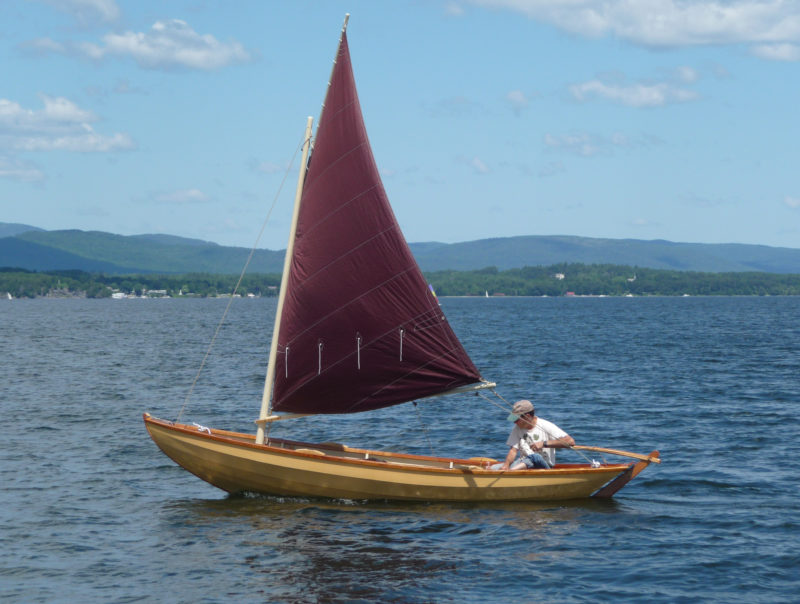 Stephan Syz
Stephan SyzJohn Gardner wrote: “These Swampscott boats are the aristocrats of the dory clan. Here is a Swampscott dory that is not too large for one man, or even a strong boy, to handle, yet large enough to retain all of the excellent qualities for which the type is noted.” While Gardner’s plans called for a sprit rig, I substituted this standing lug rig so that in an emergency while sailing alone I could drop the sail quickly while still at the tiller. The spars are all of solid red spruce (Picea rubens) and the tanbark sail is Dacron.
Upon first sight, this specimen of a Swampscott dory at the school, a cross between workhorse and thoroughbred, was what I wanted. I read books about these dories and their history, looked at photos online, and studied plans. Then, fortuitously, WoodenBoat School offered a weeklong course, “Building a Dory.” I signed up immediately.
Our instructor, Robert Elliott, had worked for years in Lowell’s Boat Shop in Amesbury, Massachusetts, where they have been turning out dories continuously since 1793. In class, Robert was sharp-eyed but soft-spoken, endlessly patient, deliberate without seeming so. He was also a philosopher—a requisite, it seems, for wooden boat builders in general. For example, when we were struggling mightily to make a joint fit absolutely perfectly, he stopped us and said, “You know, there are two kinds of ‘perfect.’ One, you see a flawless inlay, and say ‘perfect.’ Or, you’re in a boat that’s sprung a leak and is sinking and you don’t have a bailer, and someone hands you a battered bucket; ‘perfect’ you say, relieved. So, you have to decide which ‘perfect’ you want or need.”
As much as possible, Robert used hand tools—he had made many—and local materials to carry on Yankee traditions of thrift, practicality, and pride of workmanship. As I listened to him and watched him, his philosophy became my own, and I hatched my plan to build a dory: I would use native wood from my home state of Vermont, from trees I harvested and milled myself; I would use hand tools whenever I could; and I would make the sail myself, from traditional fabric. These were all things, of course, that New England boatmen used to do by necessity.
I would work close to home and close to the bone, and demonstrate that a beautiful and seaworthy boat (assuming it would turn out to be both) could be fashioned from wood of our own land, instead of exotic species that came from god-knows-where, with god-knows-what environmental impacts. I preferred to add “build a boat locally” to mantras of our times—“eat locally,” “buy locally”—for the same considerations of economy, ecology, community, and pride. When I eat game I have killed myself, or eat vegetables from my garden, I have an attachment to the food; it means something beyond that which merely tastes good or fills the stomach. I become aware of a shared history and feel the living on the same land. So too, building a boat this way would connect me to my home and feed my soul. Robert understood, of course, gave his blessing, and advised me on which woods to use and which not to.
In John Gardner’s Building Classic Small Craft, I chose the turn-of-the-20th-century Modified Swampscott Dory for its pleasing lines, the “certain minor modifications…to adapt it for amateur construction and to permit the use of materials currently to be had at most retail lumber dealers,” and an “overall length…not so great as to require building space in excess of what is available to most home workshops.” In addition to lines and offsets, there were also scantlings for everything, patterns for planks, and detailed drawings of the stems, transom, centerboard trunk, spars, and sail—all reassuring for someone who had never lofted or built a boat on his own.
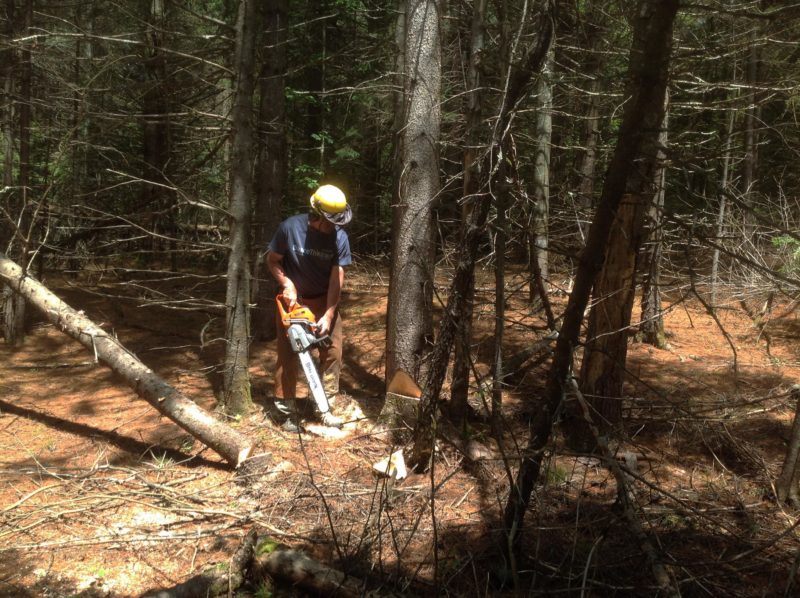 Charles Johnson
Charles JohnsonLandowner Bill Manning fells a tamarack (Larix laricina), for use in the stem, frames, gussets, transom knee, and centerboard trunk bedlog, in locations where the species’ rot-resistance and durability are vital.
I had no suitable timber on my own land, and none of the big machinery nor the skills to harvest, haul, and process logs into lumber. Just as Robert Elliott had appeared just at the right time, Bill Manning was there when I needed his help. Bill and I have been close friends for decades, brought together through our work in conservation, he in the private sector and I in the public. He has lived and worked close to the land and sea most of his life: as a boy on his family tree nursery in Massachusetts (his great-grandfather brought the Colorado blue spruce to the East and was the first to propagate the Concord grape), in college by the coast of Wales, and later running outdoor programs at various institutions, even a couple he created himself, overseeing natural resources in Vermont. Bill, as rugged as he is slender, is vision-driven and his hands are always busy at or near the ground while his eyes are always on some project in the distant future. In the guise of north-country logger, he is an entrepreneur of rustic and rural enterprises. There is a common denominator to all his ventures (some would call them adventures): Provide the kind of ethics, education and training that allow people to conserve their land while being able to make a living on it and from it. He, like Robert, lives his philosophy.
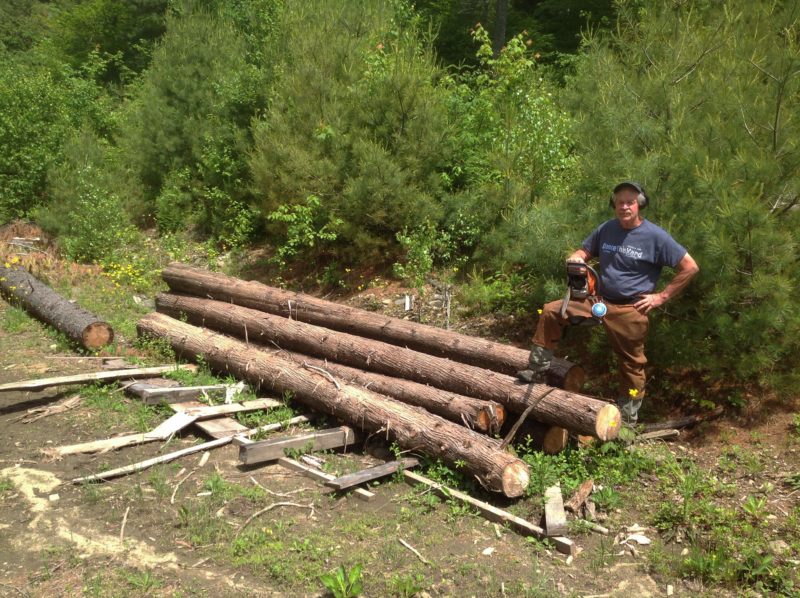 Charles Johnson
Charles JohnsonNorthern white cedar (Thuja occidentalis) harvested for the planking. These 12’ logs will be milled and planed, then scarfed to attain adequate length for the planks.
Bill owns 700 acres of timberland, from which he harvested and processed all the lumber for his home, barn, outbuildings, and the big central building of his self-started natural-resources education enterprise, the Vermont Leadership Center in East Charleston. Not one to dawdle, he readily offered his trees, equipment, and himself in my service. “What better way,” he said, “to demonstrate what you and I believe in.” He added, with a wry smile I knew well, “We’ll get to spend more time together, too.” Meaning: “You can help me later with some projects I have in mind.”
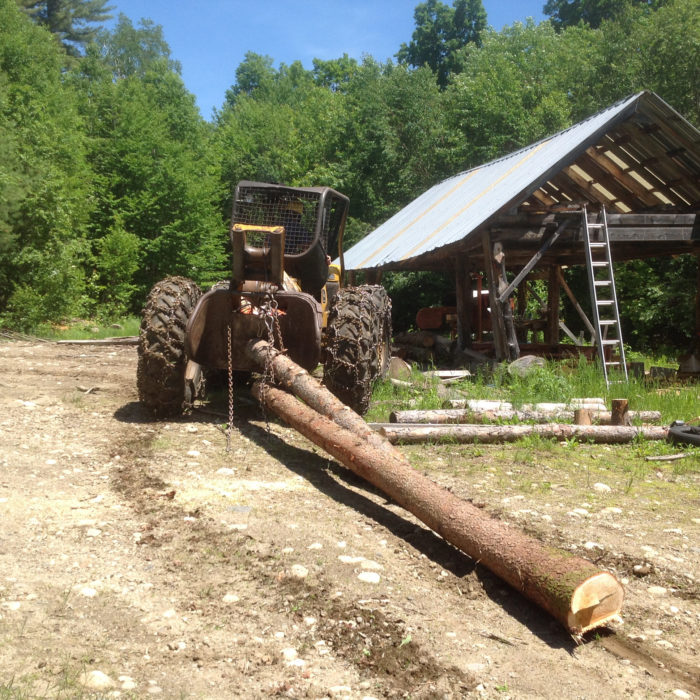 Charles Johnson
Charles JohnsonBill skids tamarack logs to his portable sawmill site, in preparation for milling into lumber.
In 2003 Bill and I went out to get the trees, cutting plenty of extras to make up for unseen defects or mistakes I would no doubt make later in construction. We felled northern white cedar, as tall, wide, and clear as we could find for the planking, and tamarack for the stem, frames, and stern knee. Tamarack cut green would twist impossibly as it dried, so we cut dead ones after we made sure that they were not the home of any cavity-dwelling birds or mammals. Black cherry heartwood mimics the color of mahogany and would serve for the gunwales, transom, thwarts and rudder. Bill had plenty of air-dried and milled cherry in his barn, so what we cut would replace the wood we pulled from his stockpile. We limbed the logs and with his skidder dragged them to his portable Wood-Mizer sawmill. Bill taught me how to operate the gas-powered horizontal bandsaw and after I practiced on several low-quality logs, butchering a few of them, I milled 5/4 planks and Bill moved them with his tractor into the drying shed. The cedar would need only six months to dry enough for planing.
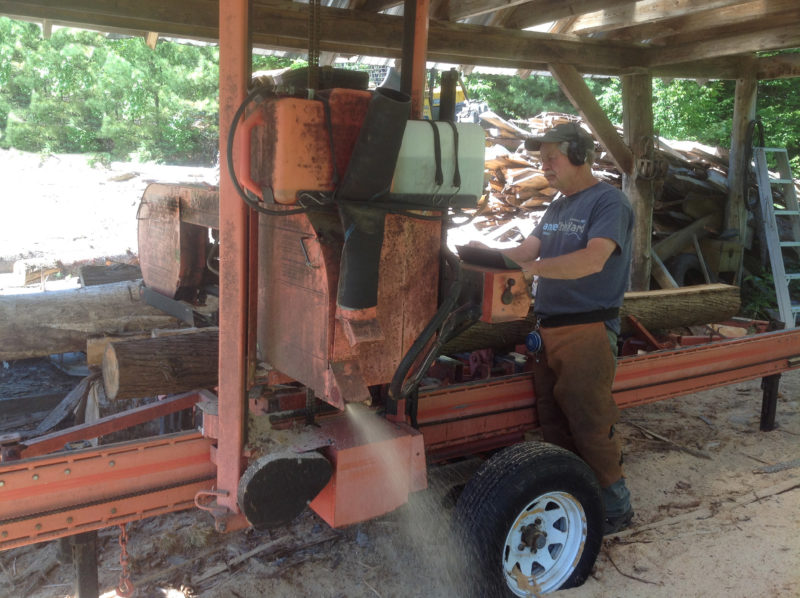 Charles Johnson
Charles JohnsonA Wood Mizer portable sawmill mills planks of white cedar. The rough planks are milled at 5/4”, to be planed later to final strake thickness of 9/16”.
Bill’s northern forest property did not have the right species for certain components, so I went off in pursuit of other quarry. I wanted apple crooks for the knees and found them in Montpelier. Another old friend, Warren Kitzmiller, and his wife had planted a crabapple in their front yard years ago when they moved into their house, and over the years it had grown large. Decades later, the apple was dying, a sad reminder of the wife he had lost earlier to cancer. With a heavy heart he cut it down. As he gave me the wood, he said, “It will be a fitting memorial.” At home I made a jig to hold the crooks and with my chainsaw cut them into slabs—thick pages of a precious memory book, they seemed—and lay them to dry atop the firewood pile in my shed.
Another friend in my town, forester-logger Paul Cate, took an interest in my project. He too loved wood, from standing trees to raw wood ready to be worked, and had the hand tools to fashion it. Among his admirable collection of carefully stickered boards of different species was the black locust I sought for oarlock pads, boom jaws, and little blocks for the running gear. It’s a very hard, dense, and rot-resistant wood that finishes to a beautiful, dark, butter-yellow. On his property Paul also had a grove of straight, medium-sized red spruce trees suitable for the spars; we cut several, thinning his stand in the process. At home I peeled the bark with a drawknife and set the naked poles under cover to dry.
For the tiller I wanted to use hophornbeam. It’s a tough and flexible wood used for axe and pump handles, befitting of its other names, ironwood and leverwood. I knew hophornbeam grew on a neighbor’s property where some logging was taking place, and asked the logger if he could put a piece aside for me. One morning there was a plank of it, roughed out by chainsaw, outside our front door.
I cut and carved a pair of oars from rough-cut white ash I bought at a local sawmill. For the centerboard I found white oak at a local woodworker’s shop, and for the centerboard trunk I salvaged wide white pine boards from the scrap pile of another neighbor’s house undergoing renovation. I was almost done scrounging for my mongrel collection, but had one more item to find. For sentimental reasons, I made an exception to my rule about using only Vermont-grown wood for one piece, the breasthook. It would be black walnut from a giant tree cut down a half century ago in the back yard of my boyhood home in Illinois. Decades later, a furniture-making friend in Montpelier designed and built a desk of that walnut, and gave me the leftover pieces, one of which became the breasthook, a little keystone holding together not just the boat but my past and present. I’m glad I didn’t know then that black walnut is considered bad luck in a wooden boat—it’s said to attract lightning.
Six months passed while my lumber dried. Bill and I loaded the cedar, cherry, and tamarack planks on a flatbed trailer and I towed the load to the Vermont Outdoor Furniture shop in Barre, a few miles from home. The owner, Bruce Gratz, had been building a magnificent oak and cypress catboat in a shed attached to the shop. I had stopped by several times to see his boat in progress, and he’d offered to run my planks through his industrial-sized planers when the time came. The time had come, and within a couple of hours, amid the whirr of machinery and the scent of cherry, cedar, and tamarack sawdust, we were done, and off I drove with my precious cargo to the next destination—the shop where I would put all the pieces together.
Lori Barg lives in the hills outside Plainfield, 8 miles from my home, in an old Vermont farmhouse she had renovated herself, including an attached building she had turned into boat shop. I had worked in that shop before, fumbling with a Shellback dinghy kit and making oars, using bandsaw, drawknives, and spokeshaves under her direction. A statuesque, earthy woman, she had worked many professions, sometimes all at once: woodworker, house builder, innovator of small hydroelectric generation, gardener, pick-your-own commercial berry grower, and builder and sailor of boats, canoes, and kayaks. Now I was taking my wood to her shop again.
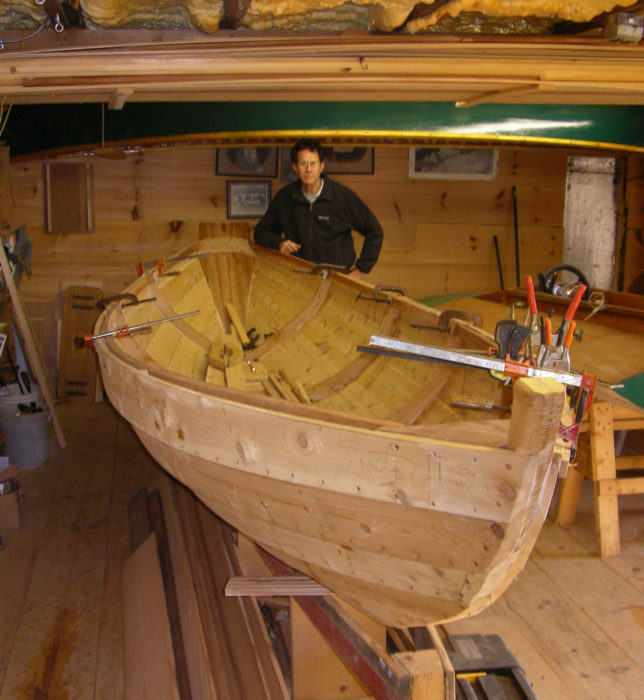 Lori Barg
Lori BargWith strakes copper-riveted together, planking is complete. Next steps: fit the false stem, outwales, and inwales. I added through-riveted spacers at regular intervals between the outwales and inwales to help stiffen the hull. I bored out loose black knots, and plugged the holes; I left the solid green knots. I built the boat right-side up instead of the traditional upside-down, so I could rivet the strakes by myself, using a leg to support the bucking iron.
For the next three years, off and on, Lori and I worked side by side: I lofting my dory on newsprint paper; she re-canvassing a canoe and building a lightweight sailboat without plans. (She had once lived in Bolivia, where she admired boatbuilders on a beach using only a few hand tools to construct beautiful craft, from memory, using techniques passed down through generations.) In summer, the big doors of Lori’s shop were open to the scents and sounds and views outside, across broad meadows to distant hills. We listened to music or talk shows on the radio; we mused about our lives and about wooden boats. In winter, we would start the woodstove in the morning, and work in coats and hats and sometimes gloves until the room warmed up. Neighborhood dogs would stop by and lie next the stove, and once in a while someone would drop in to see what we were doing, or just to chat.
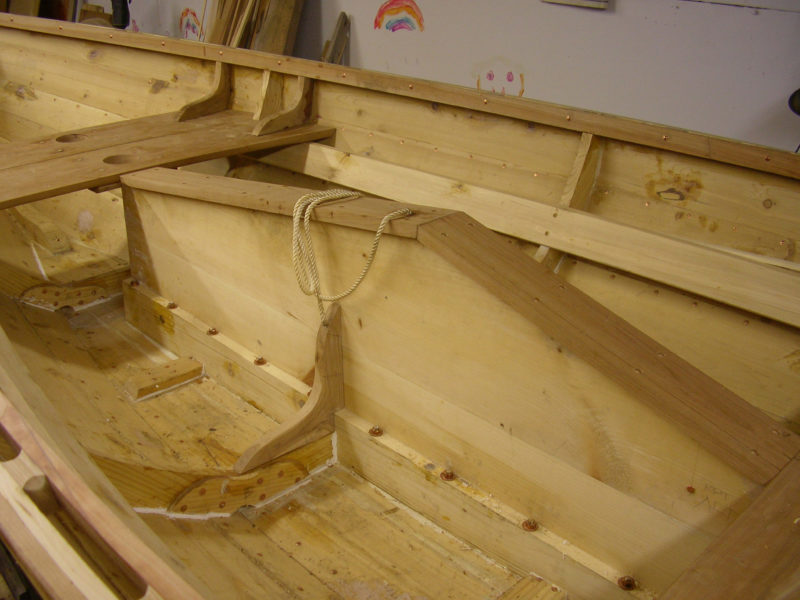 Charles Johnson
Charles JohnsonThe centerboard trunk has a black cherry (Prunus serotina) cap, white pine (Pinus strobus) sides, tamarack bedlog, and apple (Malus spp.) knees. The bedlog is affixed to bottom with silicon-bronze carriage bolts.
My boat slowly took shape, the pile of lumber and odd chunks of wood metamorphosing into recognizable structures, then the structures into a whole. Progress was halting and mistakes were common: Sometimes a day’s work would have to be undone the next, then redone the day after. I found myself often saying, “Thank God for epoxy.” It fixed errors that in earlier times might have meant tossing long-labored-over pieces into the firewood pile. I kept a list of all the mistakes I made, thinking that someday I might turn it into an amusing story. Lori lent a hand to position awkward pieces, looked on with experienced eyes to solve problems, gave a kind or corrective word, and lifted flagging spirits.
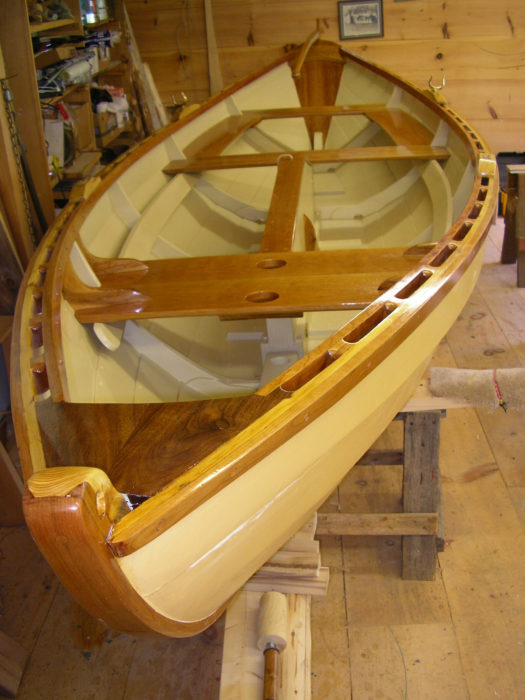 Charles Johnson
Charles JohnsonReady for the water. Gleaming under the varnish is cherry (false stem, thwarts, gunwales), black walnut (Juglans nigra, breasthook), black locust (Robinia pseudoacacia, oarlock pads), and apple (knees). Note the two holes at the mast-partners—the mast can be shifted fore or aft depending on the boat’s load.
Four years after I began, my dory was done, gleaming with its new coats of paint and varnish. On the inside top of the transom I tacked on an oval bronze nameplate etched with the name I had given her, NONA BELLE, to honor my wife, Nona née Bell.
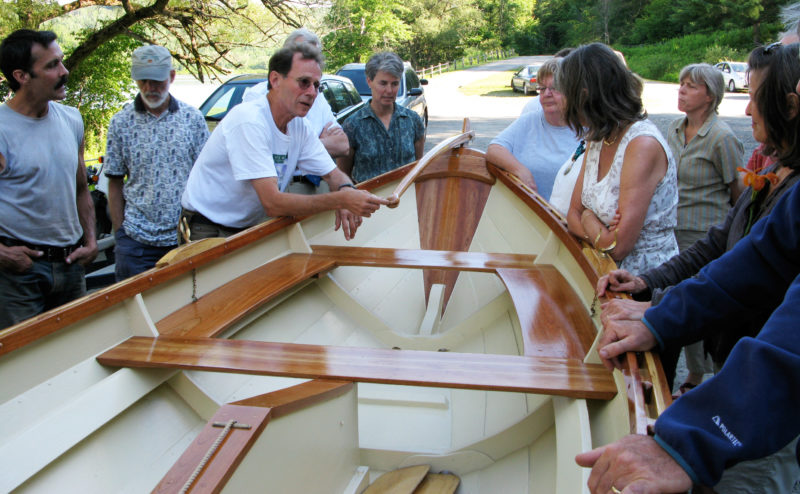 Warren Kitzmiller
Warren KitzmillerFamily and friends joined me on launch day at Wrightsville Reservoir, central Vermont. At far right, wearing the orange flower, is my wife Nona, after whom the boat is named.
The day we launched NONA BELLE at a local reservoir was sunny and warm after the rain the day before, and many family members, friends, and onlookers were at the ramp as my wife christened the boat with soda water from a plastic bottle, avoiding broken glass and wasted champagne. I backed the trailer into the water and NONA BELLE glided out to the cheers of the crowd. She rocked gently in her new world, the painter like an umbilicus reaching to the shore. A birth indeed.
 John Lazenby
John LazenbyOn launch day, I was a happy builder aboard NONA BELLE. The oars are solid (not laminated) white ash (Fraxinus americana), and fashioned from two 8′ rough-cut, full 2”-thick planks. I sewed the leathers and buttons together with sail twine—no brass tacks used—to avoid putting holes in the wood.
As I watched the water-light dappling over her sides, I hardly believed that such a thing had come to pass. NONA BELLE had attained both of Robert Elliott’s kinds of perfection: perfectly beautiful and perfectly functional. But she was not my creation alone. She had come from many others: John Gardner, his wisdom and inspiration; Robert Elliott, his craft and tradition; Bill Manning, his land and trees; Lori Barg, her advice and companionship; Bruce Gratz, his careful finishing of the lumber; Paul Cate, his spruce for spars; the leverwood logger; my wife Nona, her spirit and her energy; Vermont’s enduring forests, their giving of the raw materials. All were there in NONA BELLE, floating on the water, waiting for me.![]()
Epilogue: A concession to the modern age
With the help of an expert, I made a compact solar array for recharging my hand-held VHF radio and batteries for other devices (hand-held GPS, AM/FM radio, flashlights) and for running an automatic bilge pump.
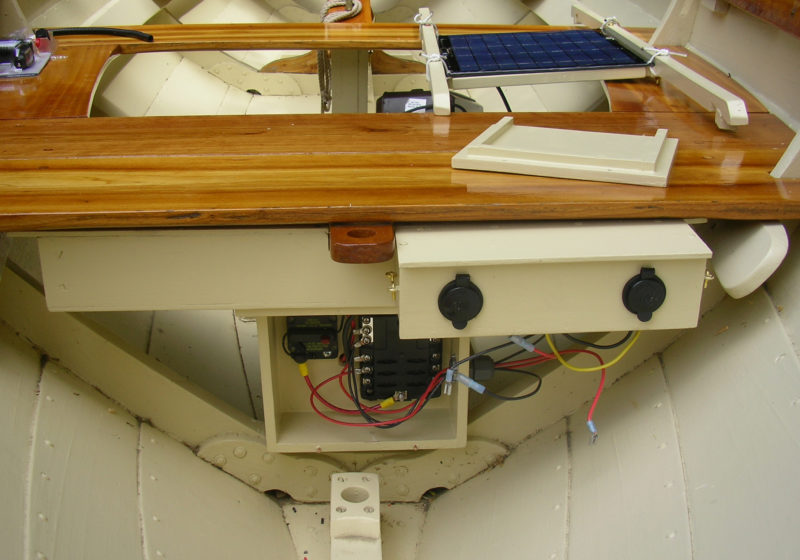 Charles Johnson
Charles JohnsonNONA BELLE’s electrical system conceals most of its elements under the aft thwart and behind sealed covers.
When in place, the frame holding the small photovoltaic panel sits across the gunwales near the transom. The panel sends DC power to a controller (to prevent overcharging), then to a 12V DC deep-cycle marine battery (not seen, under thwart forward of fuse/breaker box). The battery delivers power, via the fuse/breaker box, to two outlets (black caps) where the devices are plugged in. Though small, the battery can produce adequate power up to seven days without sunshine. To waterproof the box openings, I fitted the doors with rubber gaskets made from old inner tubes, and plugged the through-fittings for the wires with silicone sealant. The diminutive mast step and partners are for a post that supports the boom as a ridgepole for a tent-like cover I set up if I have to sleep aboard.—CWJ
Charles W. Johnson is the former Vermont State Naturalist, a 20-year veteran of the U.S. Coast Guard, and author of The Nature of Vermont, Bogs of the Northeast, and most recently Ice Ship: The Epic Voyages of the Polar Adventurer Fram. He is co-author of The Vermont Life Book of Fall Foliage and In Season: A Natural History of the New England Year. He has rowed and sailed on the coast of Maine and Cape Cod, and in Lake Champlain, Adirondack lakes, and Vermont lakes and ponds. He lives in East Montpelier, Vermont.
If you have an interesting story to tell about your adventures with a small wooden boat, please email us a brief outline and a few photos.
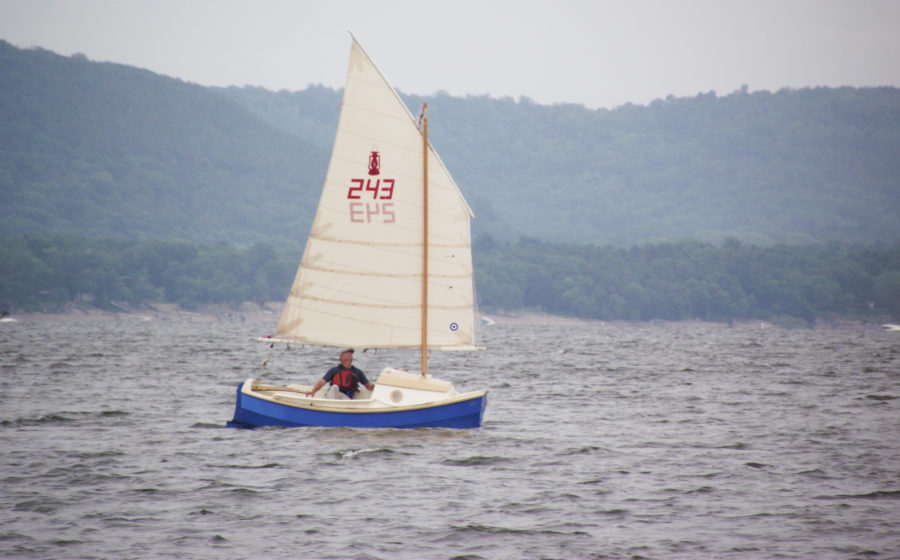
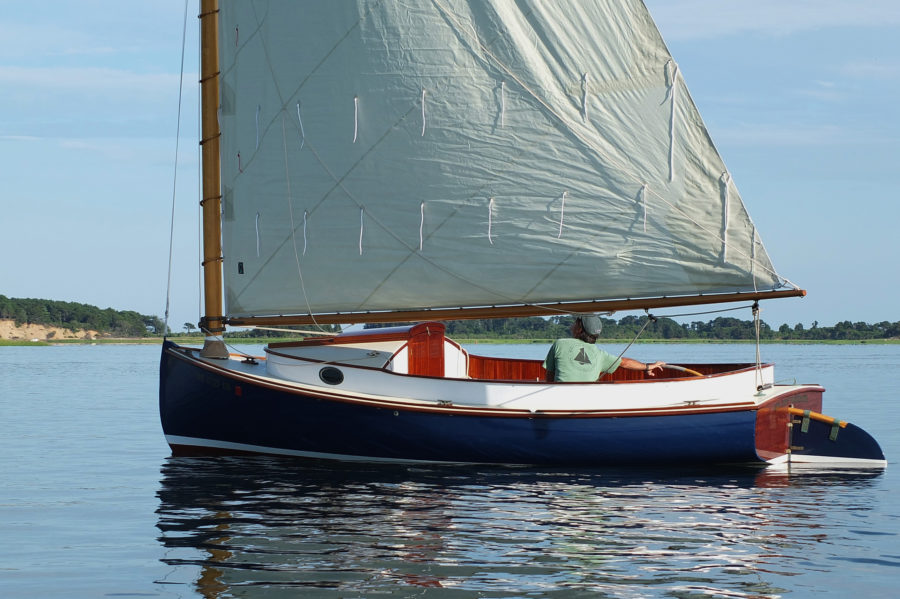
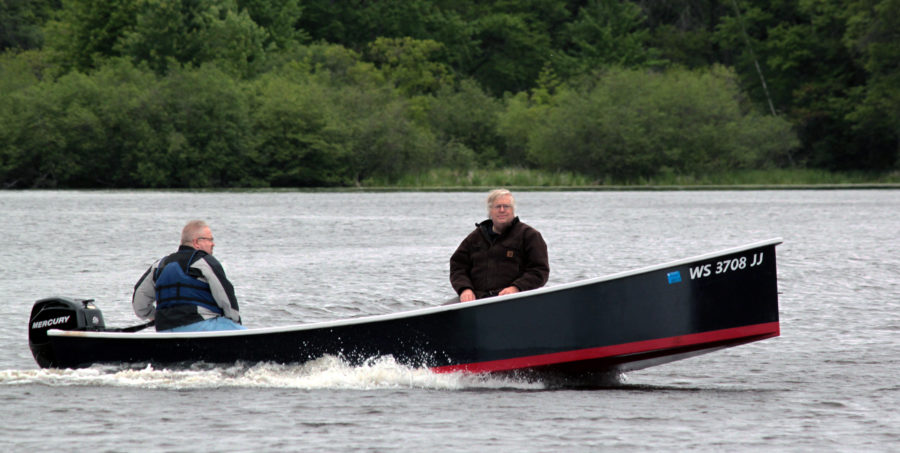
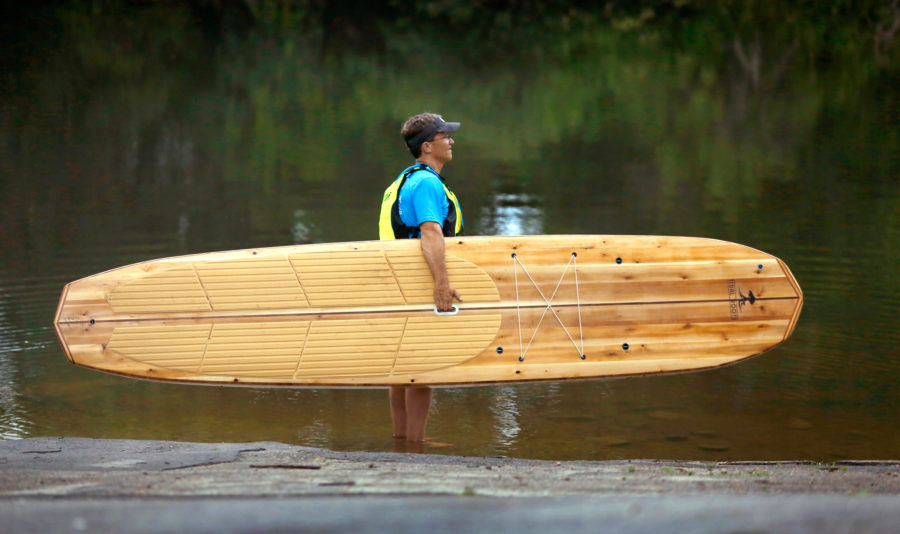
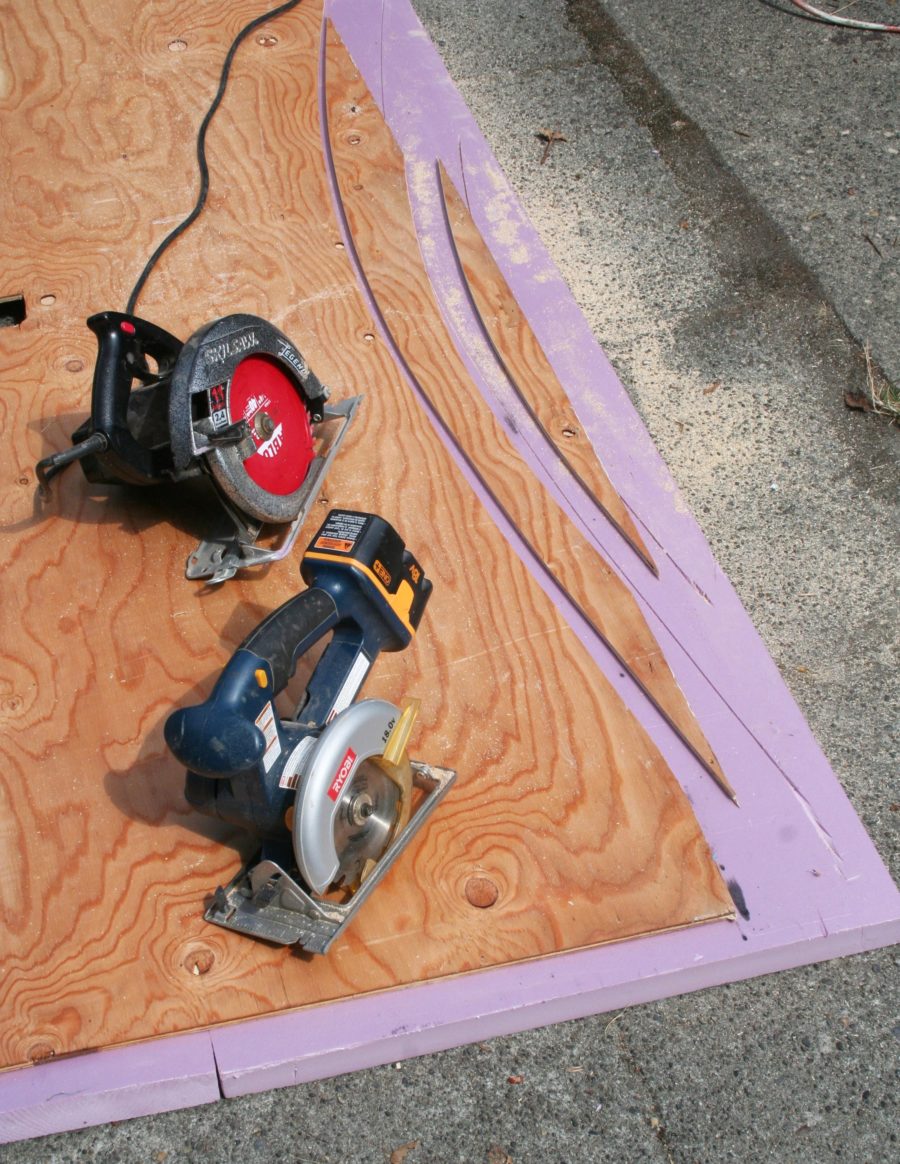
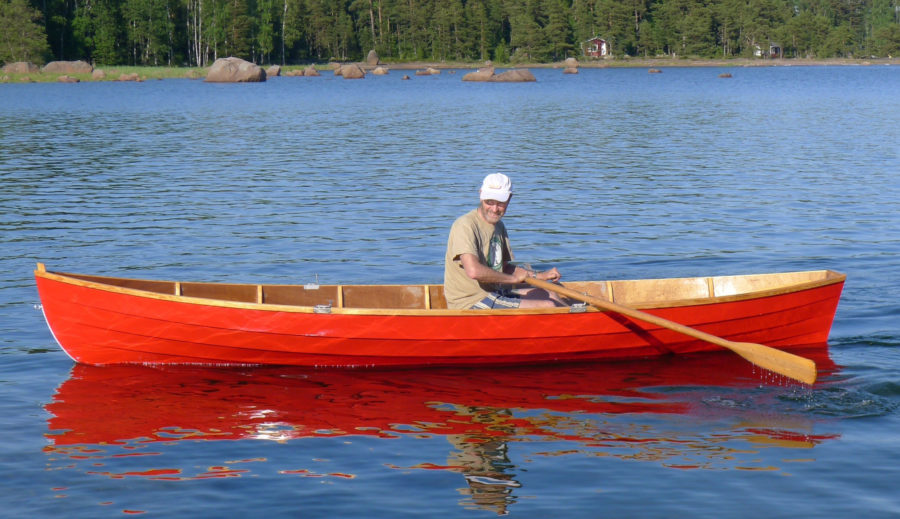
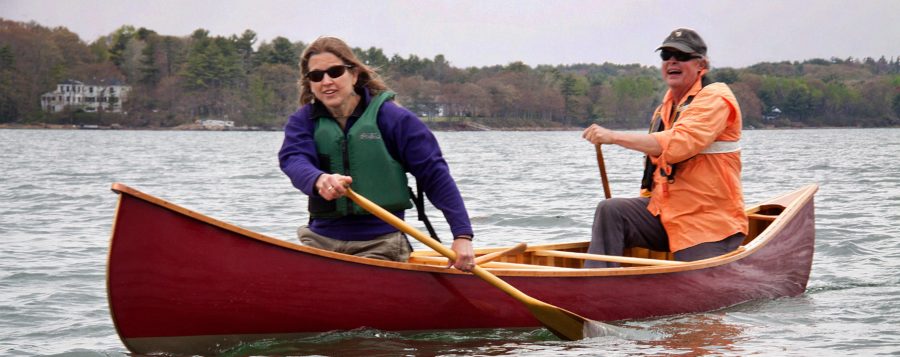

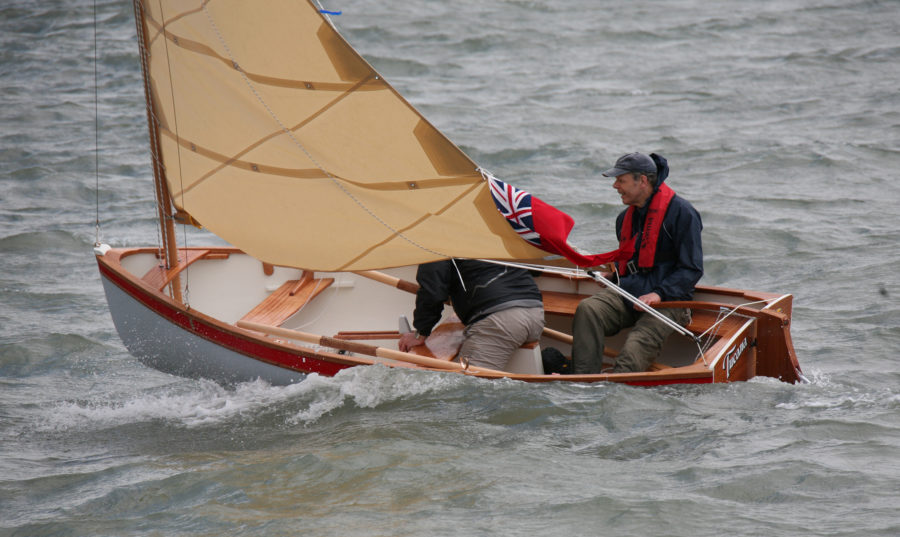
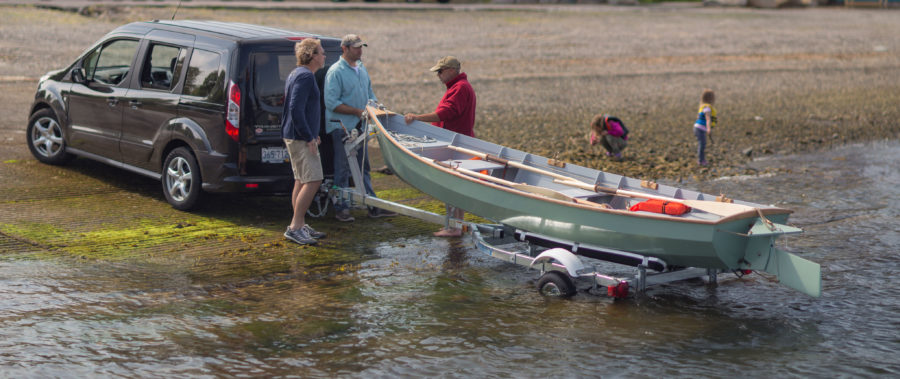
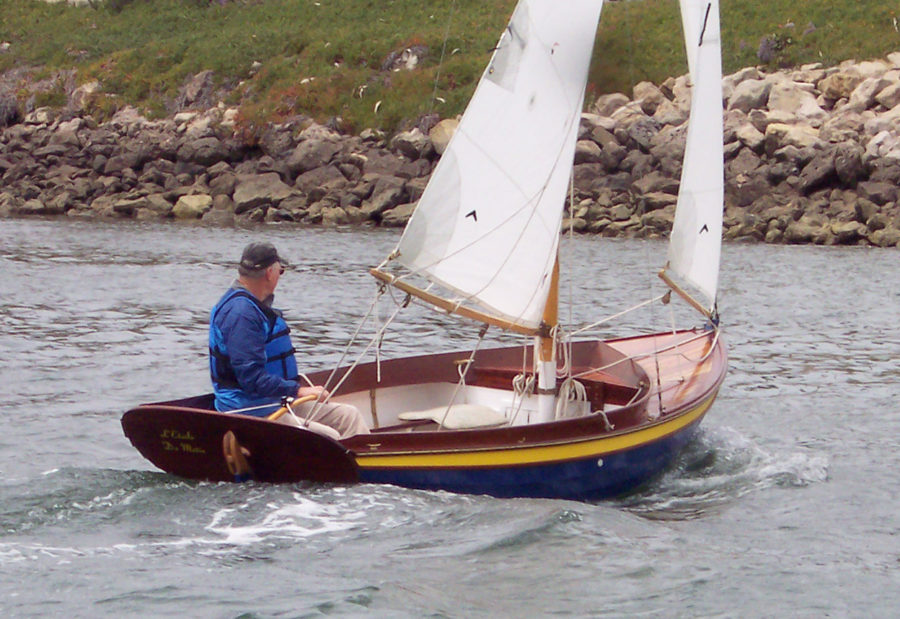
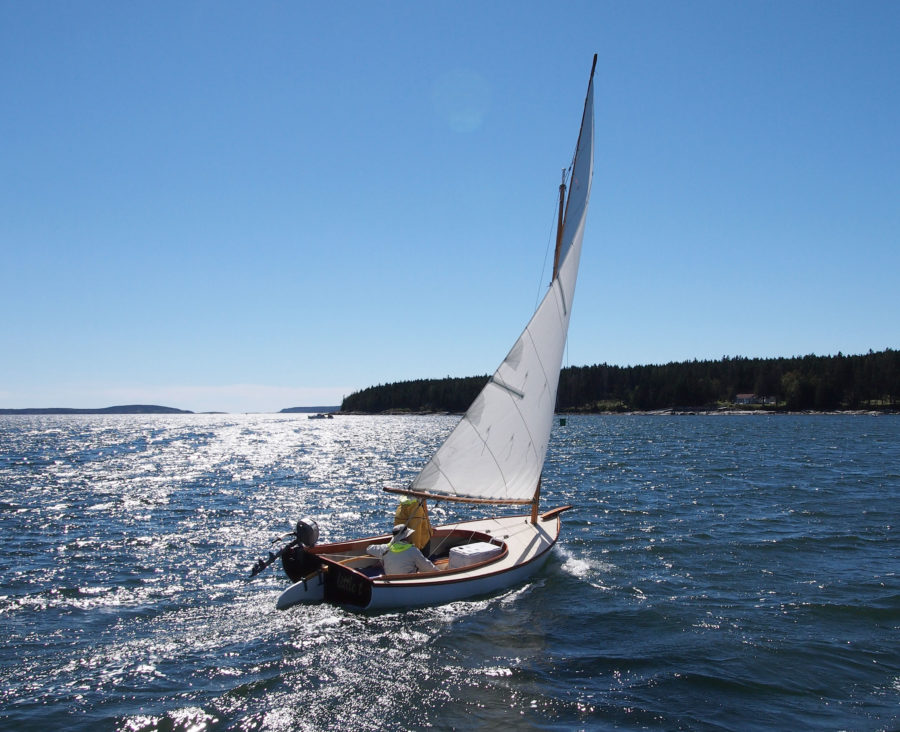
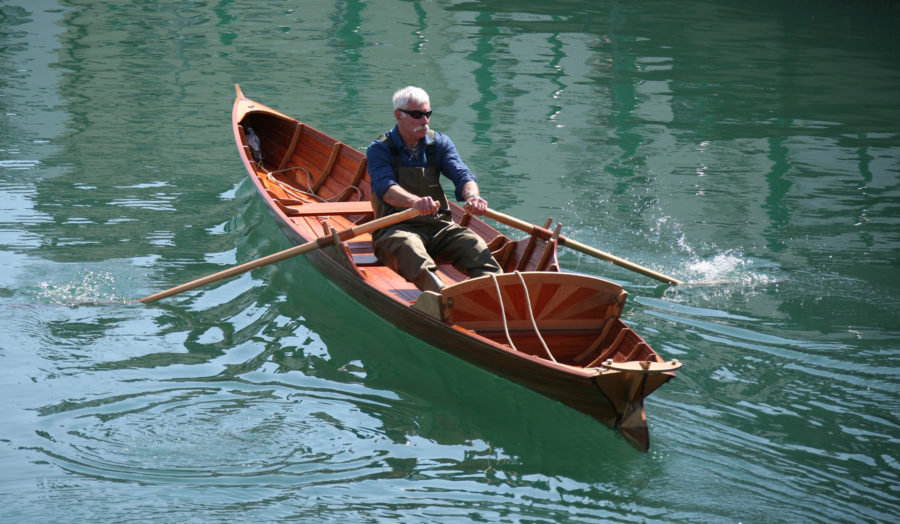
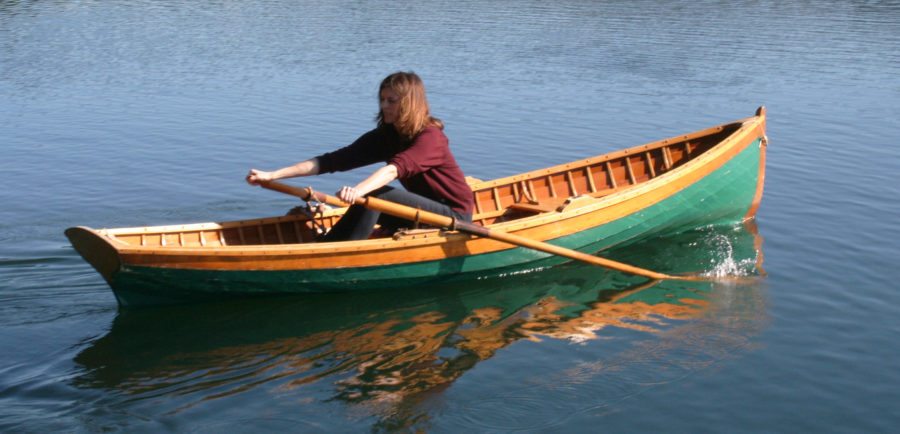
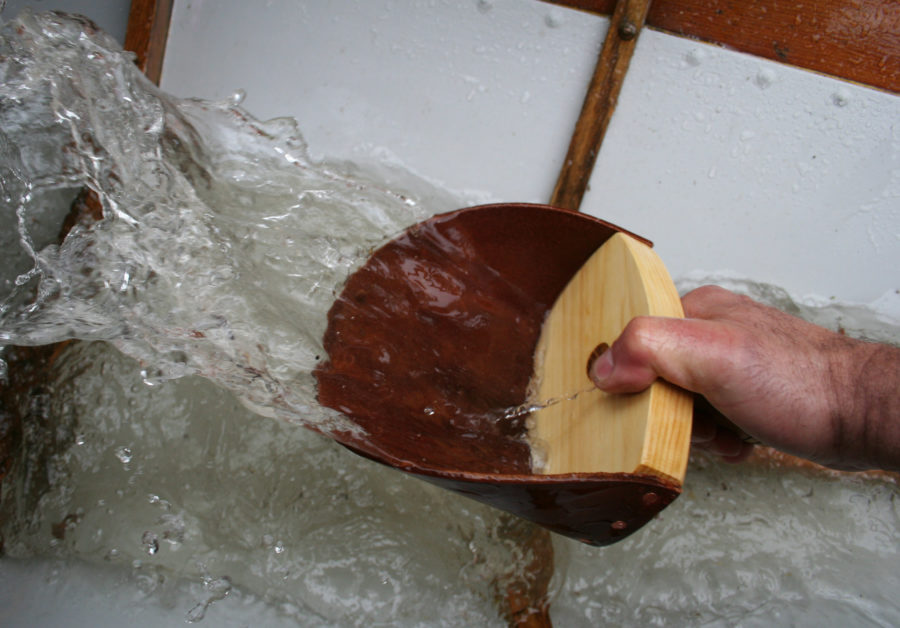
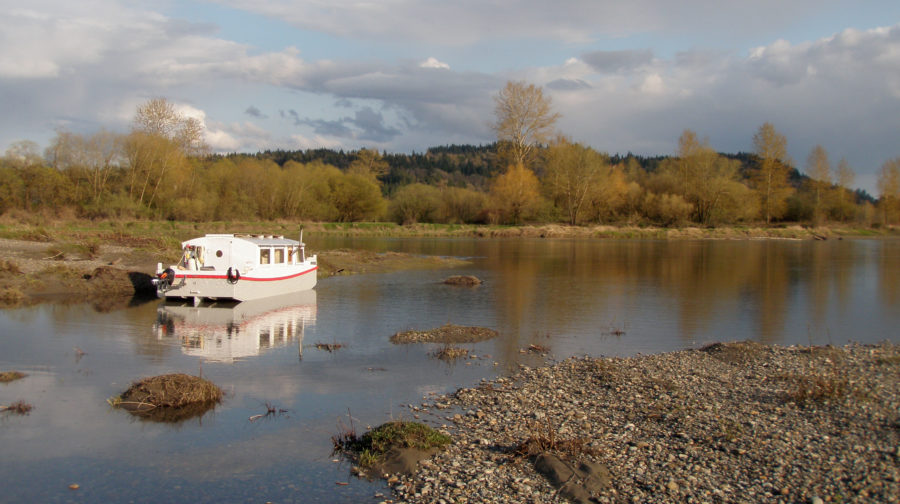
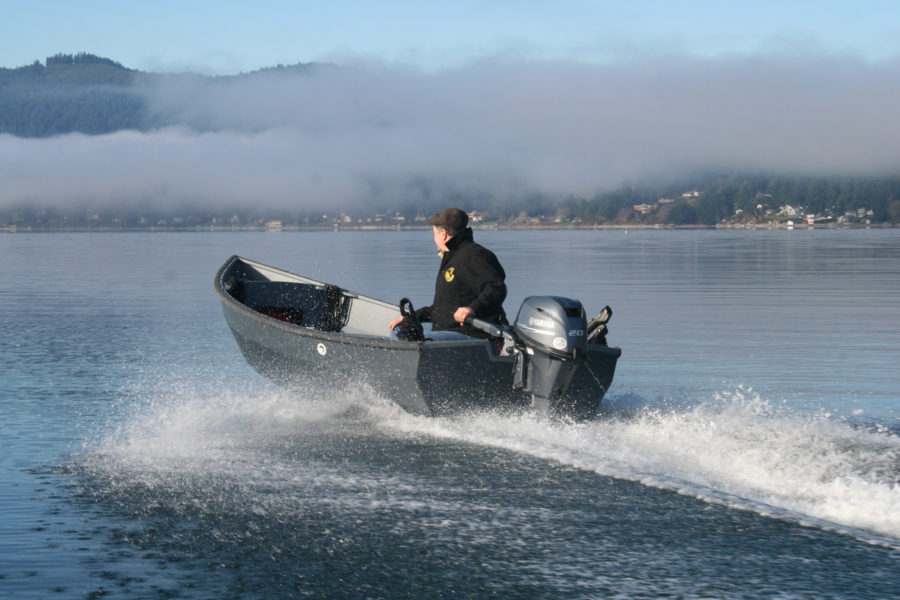
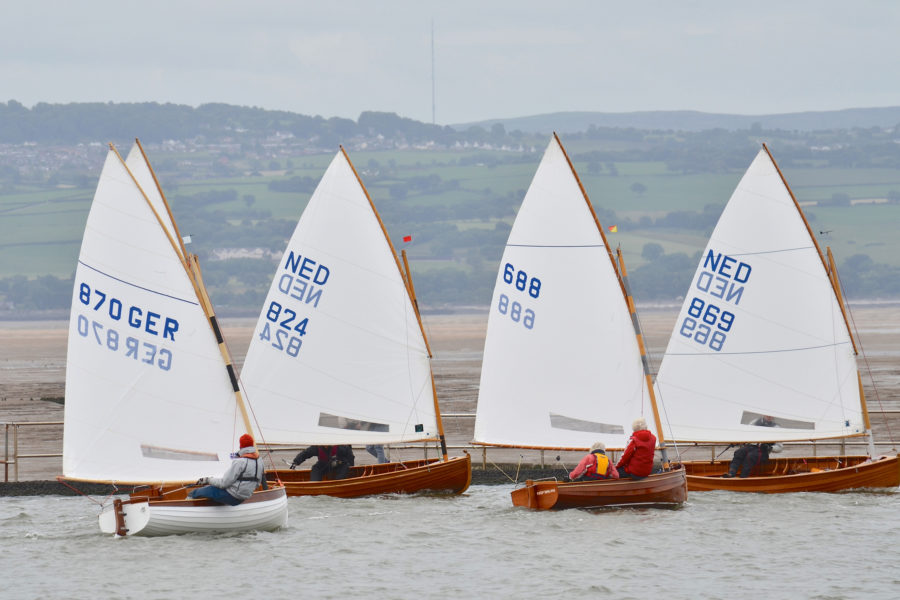
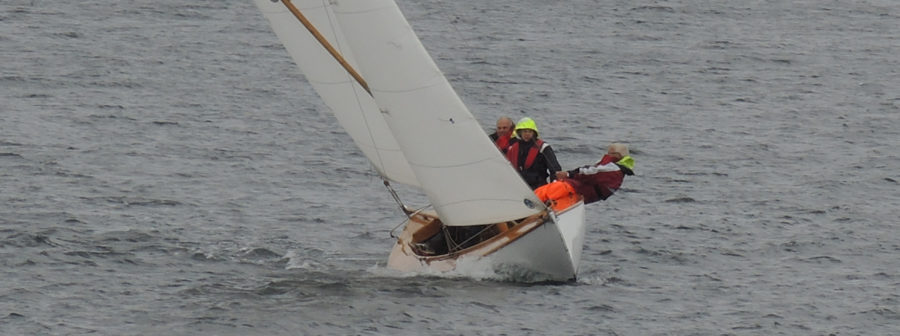
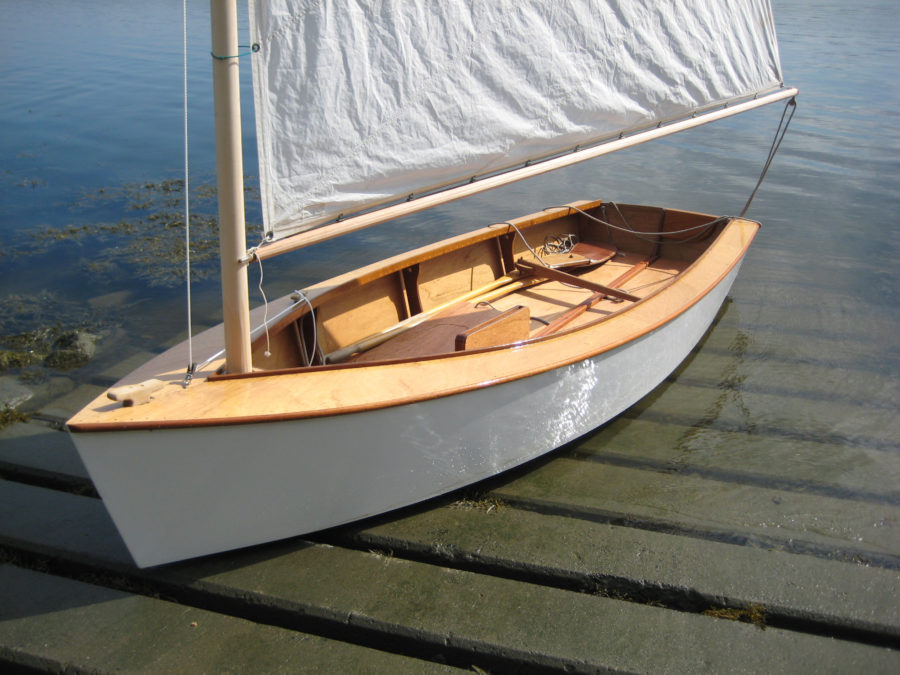
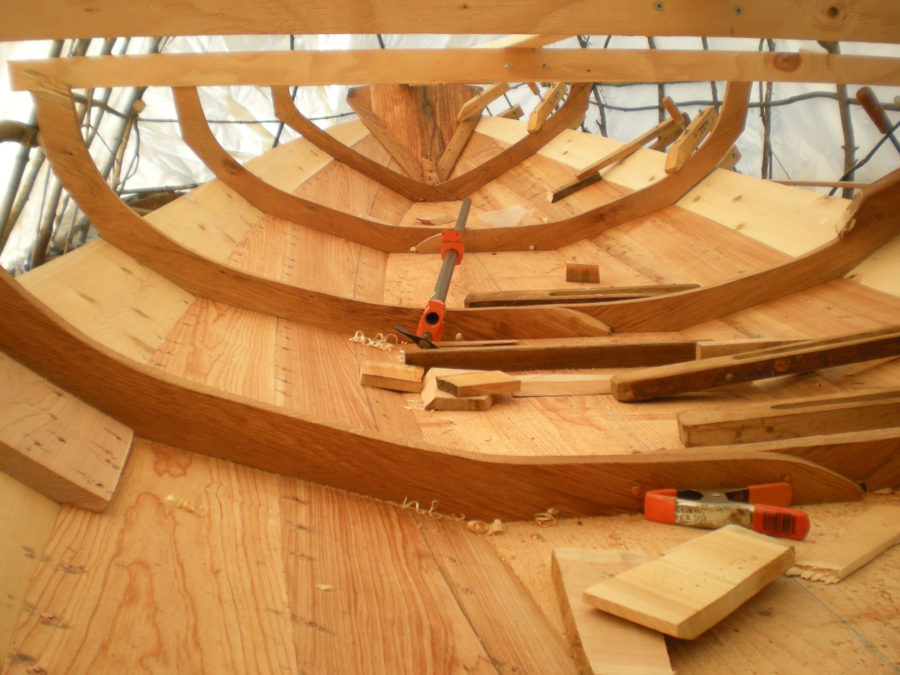
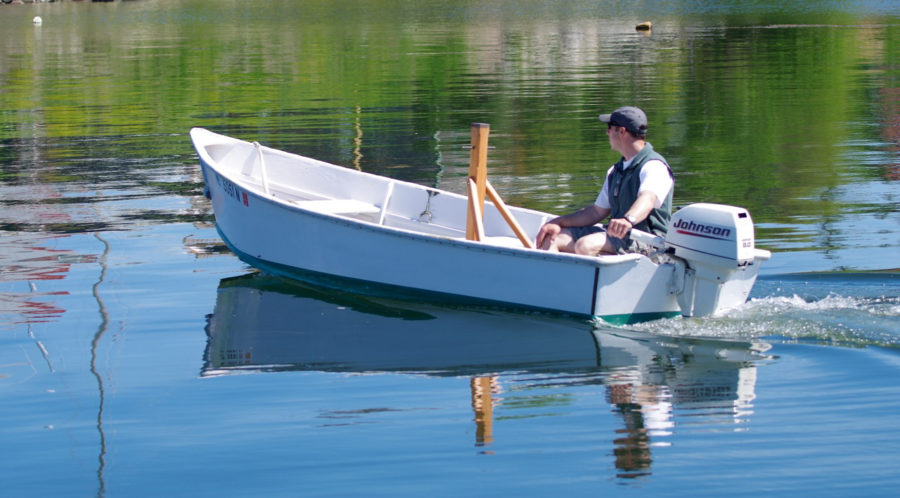
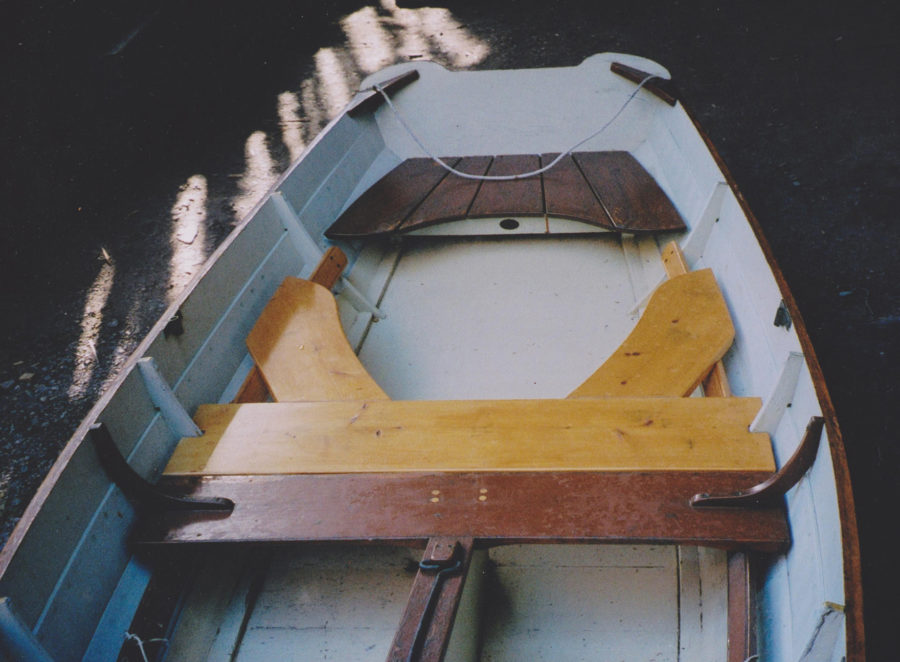
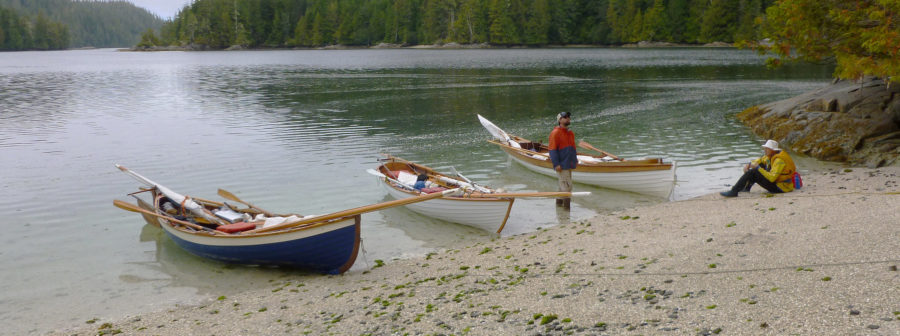
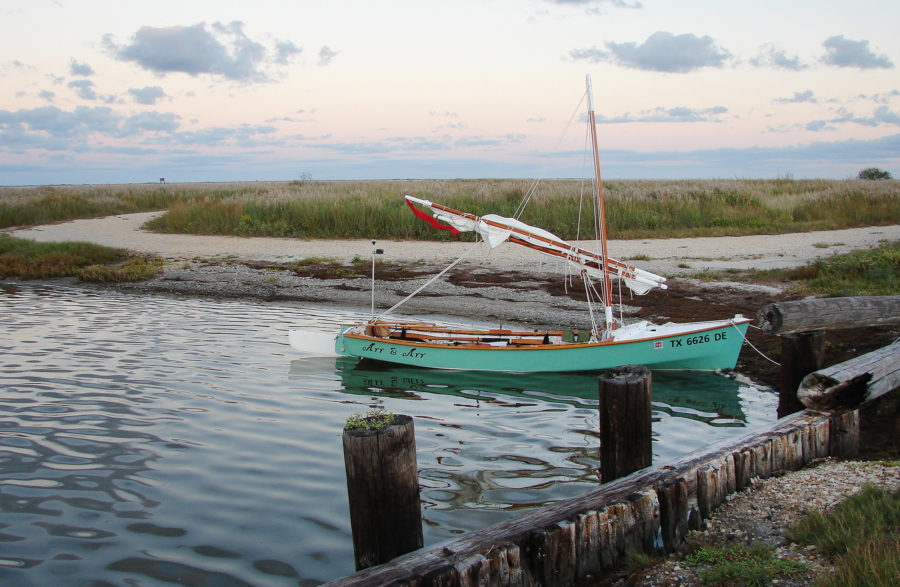
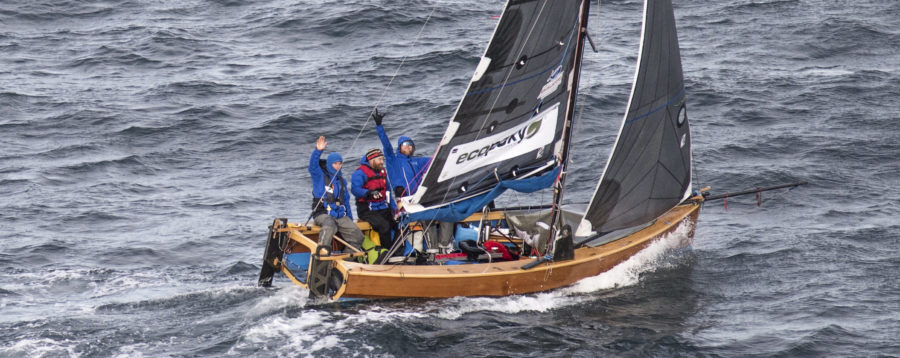
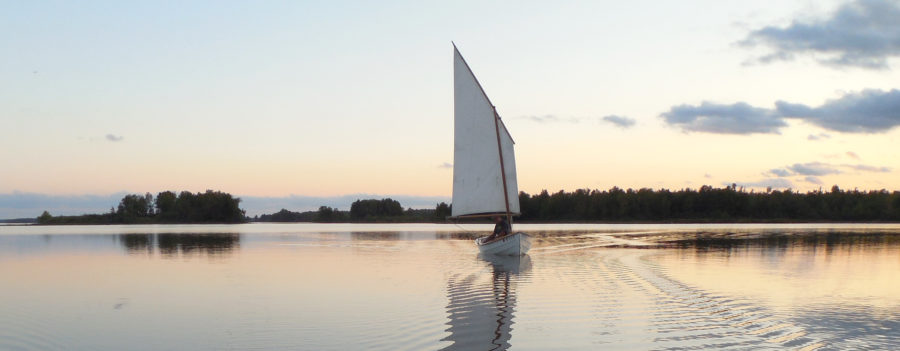
What a wonderfully inspiring story. I thoroughly enjoyed reading Charles’ account of building his Swampscott dory. It turned out beautiful and is especially handsome under sail.Good going!!
Charles, this story should be a book. While reading I could only think of the parallels of your endeavor with the philosophy and practice of John Gardner. Congratulations on creating a truly beautiful boat.
Isn’t it amazing what beauty and practicality is a result of just showing up regularly. Calm seas, Charles.
I am one of John Gardner’s students. He would have been very pleased. A lovely story, well written.
Come visit us in Texas sometime.
Rick Pratt, Director
Farley Boat Works, Port Aransas Museum
Port Aransas, Texas
Beautiful boat. The people and places behind the parts and processes make it special. Thanks for sharing your story.
Thank you all for your nice comments. I’m touched by what you say, and grateful.